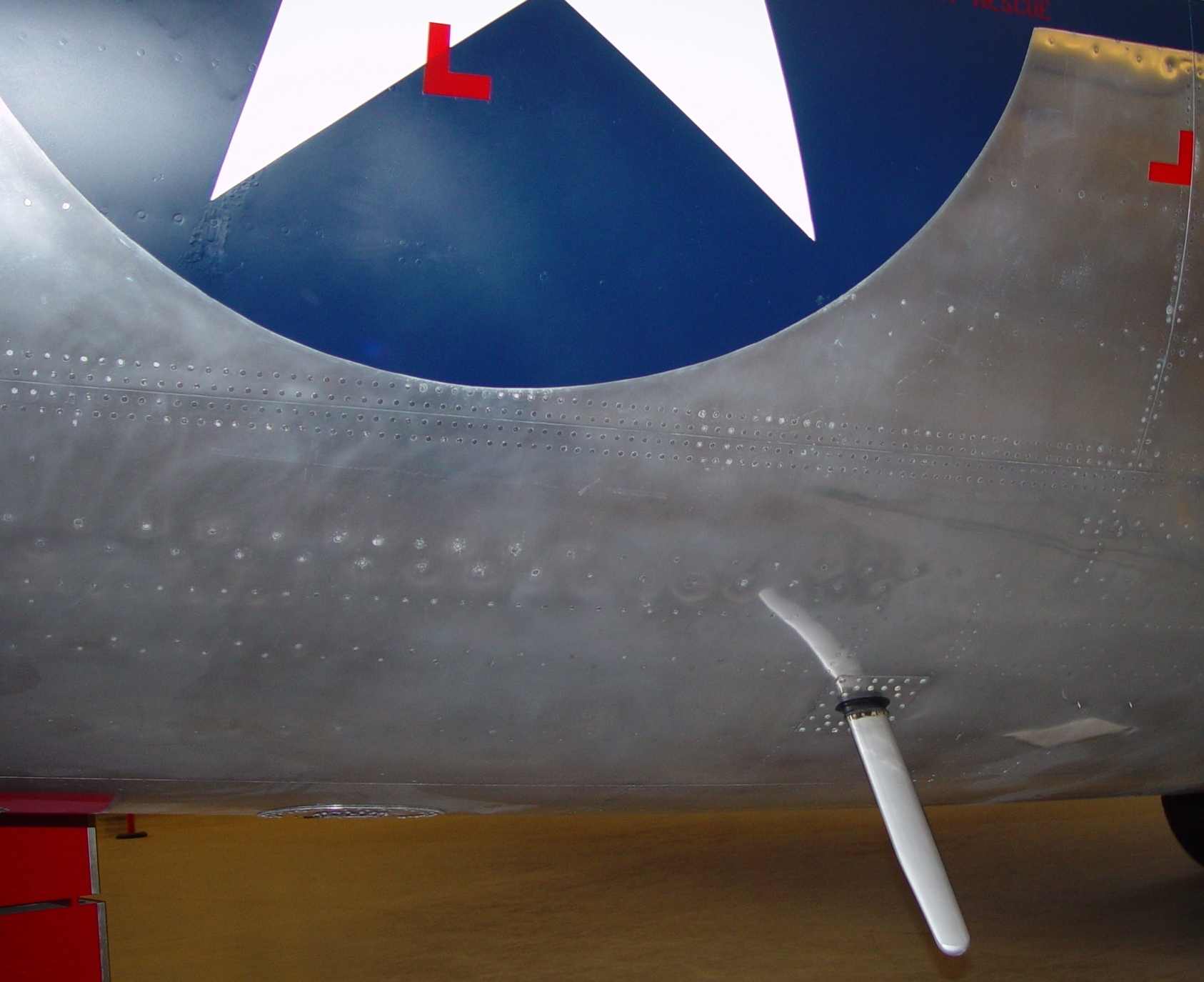Restoration Activity
WWII airborne countermeasures have been an interest of mine for more than ten years. A good
deal of research was required to simply figure out what antenna was used on the Enola Gay on
the morning of 6 August 1945. The standard Raven antenna to cover the frequency of the weapon
fuse (~410MHz) was an inverted cone labled AT-49/APR-4. For reasons which have been lost to
history, the Countermeasures Officer (Jacob Beser) selected an AS-114/APT blade antenna for the job instead.
There is sound technical rationale for it, including the greater gain over a small frequency band
enjoyed by the blade antenna.
Having the blade was only the first step, however. The B-29 has a series of ports built into the
airframe for countermeasures antennas, but they had all been covered over after coming home
from the Hiroshima mission. I had to make a new plate to adapt the blade to the port, shown
below:
 Countermeasures Antenna
Countermeasures Antenna
There are two separate long-wire antennas on the Enola Gay, one for liaison work and the other
labled the 'command' antenna. They are virtually the same length (about 75 feet) but one runs
to the top of the tail, while the command antenna runs across to the right hand horizontal
stabilizer. Both of these antennas were MIA, but at least the liaison antenna had the tension
spring still attached to the mount. Alas, it did not fit the banjo fitting on the horizontal
stabilizer, so a good deal of work went into poring over old Boeing drawings. It turns out
that there were several different designs for this tension unit, but one was slim enough to fit
above the wing without rubbing. I had to fabricate this one from scratch, including the
internal spring, scaled from those drawings.
 Antenna Tension Unit
Antenna Tension Unit
Not all the work is on the Enola Gay, however. There is an entire series of WWII artifacts
that are in the queue. For example, another interesting restoration in progress is shown
here. This one is a 1944
Navy air-to-air missle called the Gorgon 2A.
More recently, selection of the most important technological avionics breakthroughs of the
era has taken some time. Samples of these rare devices (radios included) will be displayed in
glass encased exhibits at the new Udvar-Hazy Center, just a few yards from the Enola Gay. The
greatest difficulty is in selecting from so many deserving artifacts.
See Type
K command set for a glimpse into one of these future exhibits.
To be continued
Return to AAFRadio home page


